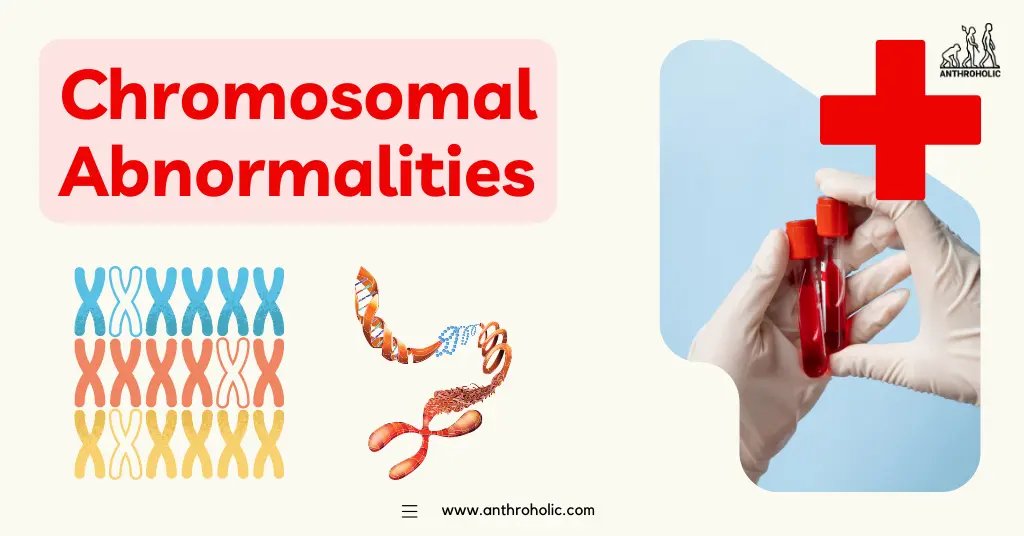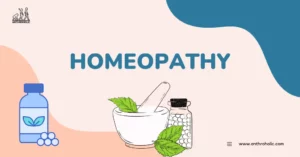AI Answer Evaluation Platform Live Now. Try Free Answer Evaluation Now
Chromosomal Abnormalities
Chromosomal abnormalities occur when there is a significant change in the number or structure of chromosomes in a person’s cells. This can include deletions, duplications, inversions, or translocations of chromosome parts. Chromosomes are the structures within cells that carry genetic information, so changes in chromosomes can affect many aspects of development and bodily functions.

Some well-known chromosomal abnormalities include Down Syndrome (trisomy 21), Turner Syndrome (monosomy X), and Klinefelter Syndrome (an extra X chromosome in males). These abnormalities can result in a wide range of physical and cognitive effects, depending on the specifics of the abnormality and the genes affected.
The Anthropological Significance of Chromosomal Abnormalities
From an anthropological perspective, chromosomal abnormalities provide a unique lens through which to study human biology, evolution, culture, and society.
In biological anthropology, chromosomal abnormalities can inform our understanding of human evolution and diversity. For example, studying the distribution and effects of these abnormalities can shed light on genetic variation and adaptation in different populations over time [1].
Cultural anthropology, on the other hand, can explore how different societies understand, interpret, and respond to chromosomal abnormalities. This includes belief systems, stigmas, support structures, and medical practices related to these conditions [2].
In addition, chromosomal abnormalities can be significant in the field of medical anthropology, which studies health and illness in the context of culture and society. Chromosomal abnormalities can impact health in many ways, influencing not only physical and mental health but also health behaviors, healthcare access, and social determinants of health.
Understanding Chromosomes
What Are Chromosomes?
Chromosomes are thread-like structures located inside the nucleus of both animal and plant cells. Each chromosome is made up of tightly coiled DNA and protein, a combination known as chromatin. DNA within the chromosome contains genes, which carry the instructions for characteristics inherited from our parents.
In humans, cells typically contain 46 chromosomes: 22 pairs of autosomes (numbered chromosomes) and one pair of sex chromosomes. The sex chromosomes are either two X chromosomes in females (XX) or one X and one Y chromosome in males (XY).
Role and Significance of Chromosomes in Human Biology
Chromosomes play a vital role in human biology as they carry the genes that determine every trait we inherit, ranging from eye color to predisposition to certain diseases. Each of our cells contains a complete set of our chromosomes, allowing cells to replicate and carry out their specific functions.
In the broader scope of human biology, chromosomes also determine sex, as the 23rd pair of chromosomes (the sex chromosomes) differ between males and females. This differentiation leads to sex determination and the associated development of secondary sexual characteristics during puberty.
Chromosomes are also crucial in the context of reproduction. In the formation of sperm and egg cells (meiosis), chromosomes are halved to ensure that the offspring inherit the correct number of chromosomes – half from each parent. Any errors during these cell divisions can lead to chromosomal abnormalities, which can result in a range of developmental disorders.
The Nature and Types of Chromosomal Abnormalities
Chromosomal abnormalities refer to changes in the normal structure or number of chromosomes, which can interfere with normal growth, development, and function of the body’s systems. There are several types of chromosomal abnormalities, including numerical and structural.
Numerical Abnormalities
Numerical abnormalities occur when an individual is missing a chromosome from a pair (monosomy) or has more than two chromosomes of a pair (trisomy or polysomy).
- Monosomy: This refers to the absence of one chromosome in a pair. Turner syndrome (45,X), where a female has only one X chromosome, is an example of monosomy.
- Trisomy: This occurs when there’s an extra chromosome in a pair, leading to three chromosomes instead of the usual two. Down syndrome (trisomy 21), Patau syndrome (trisomy 13), and Edwards syndrome (trisomy 18) are examples of conditions caused by trisomy.
Structural Abnormalities
Structural abnormalities occur when the structure of a chromosome is altered. This can occur in several ways, including deletions, duplications, inversions, translocations, and ring chromosomes.
- Deletions: This involves the loss of part of a chromosome. An example is Cri-du-chat syndrome, caused by a deletion on the short arm of chromosome 5.
- Duplications: This refers to the repetition of a segment of a chromosome. Charcot-Marie-Tooth disease type 1A results from a duplication of the gene PMP22 on chromosome 17.
- Inversions: This involves a chromosome segment that’s flipped end-for-end. Some inversions can cause health problems, while others have no effect.
- Translocations: This occurs when parts of chromosomes are rearranged or exchanged. Translocations can be balanced (no genetic material is lost or gained) or unbalanced (extra or missing genes). An example of a disorder caused by translocations is certain types of chronic myeloid leukemia.
- Ring Chromosomes: These occur when a chromosome forms a ring-like structure. This can cause various symptoms depending on the genes affected by the ring formation.
The Biological Causes and Effects of Chromosomal Abnormalities
Chromosomal abnormalities can occur due to various biological reasons and can result in a wide range of physical, developmental, and health effects.
Causes of Chromosomal Abnormalities
Most chromosomal abnormalities occur as a result of errors during cell division—either during the formation of eggs or sperm (meiosis) or in early fetal development (mitosis).
- Meiotic Non-Disjunction: Non-disjunction is the failure of a pair of chromosomes to separate correctly during meiosis. This can result in sperm or egg cells with too many or too few chromosomes. If these cells participate in fertilization, the resulting embryo will have a numerical chromosomal abnormality like trisomy or monosomy (Hassold & Hunt, 2001).
- Mitotic Errors: Errors can also occur after fertilization, during the early cell divisions of the developing fetus. Such mistakes can lead to mosaicism, a condition where some cells in the body have a different chromosomal makeup than others (Youssoufian & Pyeritz, 2002).
- Breakage and Rejoining: Breakage of chromosomes can result in structural abnormalities. If the broken ends rejoin incorrectly, it can lead to deletions, duplications, inversions, or translocations.
Effects of Chromosomal Abnormalities
The effects of chromosomal abnormalities vary greatly depending on the specific abnormality and the genes affected.
- Physical and Developmental Effects: Many chromosomal abnormalities result in characteristic physical signs. For example, Down syndrome (trisomy 21) can result in facial characteristics like a flat facial profile, an upward slant to the eyes, and a protruding tongue. Other effects can include heart defects, growth delays, and intellectual disability.
- Health Effects: Some chromosomal abnormalities increase the risk of specific health problems. For example, individuals with Turner syndrome (monosomy X) often experience heart problems, hearing loss, and autoimmune disorders.
- Reproductive Effects: Certain chromosomal abnormalities can affect reproductive health, resulting in infertility, recurrent miscarriages, or the risk of having a child with a chromosomal abnormality.
Case Studies
Chromosomal Abnormalities in Prehistoric Societies: Evidence and Interpretations
Archaeological and anthropological research has unearthed considerable evidence of chromosomal abnormalities in prehistoric societies.
- Physical Evidence of Chromosomal Abnormalities in Archeological Finds: Skeletal remains are a rich source of information about health and disease in prehistoric societies. Evidence of Down syndrome, for example, has been discovered in a 1,500-year-old archaeological site in France, providing the oldest confirmed case of the condition.
- Genetic Studies on Preserved Tissues: Advancements in ancient DNA (aDNA) technology have enabled us to study genetic material from preserved prehistoric tissues. Recently, researchers successfully extracted and sequenced aDNA from prehistoric human teeth, potentially offering insights into chromosomal abnormalities.
- Interpretations of Prehistoric Artifacts and Habitation: The ways societies treated individuals with chromosomal abnormalities can be gleaned from artifacts and burial sites. For example, a Neolithic burial site in Portugal hints at a societal acknowledgment and care for an individual with Down Syndrome, demonstrating the ancient roots of humanity’s capacity for empathy.
Current Societies: Chromosomal Abnormalities and Cultural Reactions
The perceptions and responses to chromosomal abnormalities vary considerably across societies.
- Medical Perspectives and Technological Advancements: Modern medicine’s approach to chromosomal abnormalities has evolved significantly over the years. For example, prenatal testing techniques like amniocentesis, once invasive and risky, have become safer and more accessible.
- Cultural Attitudes and Practices: Different cultures respond to chromosomal abnormalities in unique ways. A study among the Yupik Eskimos, for example, found a more inclusive and accepting attitude towards individuals with disabilities.
- Ethical, Legal, and Policy Considerations: Societies grapple with ethical and legal dilemmas related to chromosomal abnormalities, such as the right to life and quality of life for individuals with these conditions. In recent years, debates have arisen over the ethics of prenatal testing and selective abortion, with different societies offering divergent perspectives.
- Impact on Affected Individuals and Families: Societies vary in how they support individuals with chromosomal abnormalities and their families. A study in Saudi Arabia, for instance, found that many families struggle with stigma and insufficient support, reflecting the need for more inclusive policies and awareness.
Emerging Areas of Study in the Anthropology of Chromosomal Abnormalities
The anthropological study of chromosomal abnormalities is a rapidly evolving field, driven by advances in both genetic science and anthropological theory and methodology. Some emerging areas of study could be:
- Anthropogenetics: This emerging field blends genetic science with anthropology to uncover the ways that cultural practices, historical events, and social structures interact with our genomes. For instance, studies could investigate the distribution of certain chromosomal abnormalities in specific populations, and how historical migrations, intermarriage practices, or other factors may have contributed.
- Bioarcheology and Paleogenetics: New techniques for extracting and analyzing DNA from ancient skeletal remains are opening up new possibilities for understanding chromosomal abnormalities in prehistoric populations. This could help trace the evolution of these conditions and the societal responses to them over time.
- Medical Anthropology and Ethnography: Studies in this area could explore how individuals and societies understand and manage chromosomal abnormalities in the context of local medical knowledge, religious beliefs, social norms, and health systems.
- Anthropology of Disability: Chromosomal abnormalities are often associated with physical and intellectual disabilities. An emerging area of study is the exploration of how societies define, understand, and interact with disability. It also involves questioning and challenging the stigma and discrimination often associated with these conditions.
Future Directions in Chromosomal Abnormalities Research
As our understanding of chromosomal abnormalities deepens, so do the possibilities for future research. Some potential future directions could be:
- Personalized Medicine: Advances in genomics could lead to personalized treatments based on an individual’s specific chromosomal makeup. Future research could explore the ethical, societal, and practical implications of this shift.
- Gene Editing: Techniques like CRISPR have raised the possibility of correcting chromosomal abnormalities at the genetic level. Anthropological research could investigate the cultural, ethical, and societal implications of such interventions.
- Public Policy and Social Justice: As societies become more aware of the rights and needs of individuals with chromosomal abnormalities, future research could focus on how laws, policies, and societal structures can promote or hinder social justice for these individuals.
- Global Health Perspectives: Investigating the management and understanding of chromosomal abnormalities across different societies can lead to a more inclusive global health perspective. Future studies could examine health disparities, stigma, and cultural beliefs surrounding chromosomal abnormalities in diverse cultural settings.
- Interdisciplinary Research: The complexity of chromosomal abnormalities necessitates an interdisciplinary approach, combining insights from genetics, anthropology, psychology, sociology, and other disciplines. Future research could seek to build these bridges and create a more holistic understanding of chromosomal abnormalities.
References
[1] Ramachandran, S., Deshpande, O., Roseman, C.C., Rosenberg, N.A., Feldman, M.W., & Cavalli-Sforza, L.L. (2005). Support from the relationship of genetic and geographic distance in human populations for a serial founder effect originating in Africa. Proceedings of the National Academy of Sciences of the United States of America, 102(44), 15942–15947. https://doi.org/10.1073/pnas.0507611102
[2] Rapp, R. (2000). Testing Women, Testing the Fetus: The Social Impact of Amniocentesis in America. New York: Routledge.3. Inhorn, M.C., & Wentzell, E.A. (2012). Medical Anthropology at the Intersections: Histories, Activisms, and Futures. Durham: Duke University Press.




